Retirement 103: Can I retire? | “How much I have saved” vs “How much I spend” | Retirement Planning

In our series on retirement, I’m perplexed by the focus on How much I have saved versus how much I spend? It is true the more I have saved will reflect on what type of retirement I will enjoy. But I believe our primary focus should be on my expenses first and foremost.
Retirement 102: I’m 54 with $750K. Can I Retire At 67 with an Income of $12K/Month?

Do I have enough money to retire today? I’m going to talk about a couple in their early 50s with $750,000 in investable assets and a projected monthly income need of more than $12,000 once they retire, but no pension from either of their employers.
62 Divorced & $300,000 saved, Can I make it in retirement? Real-Life Examples of Retirement Planning
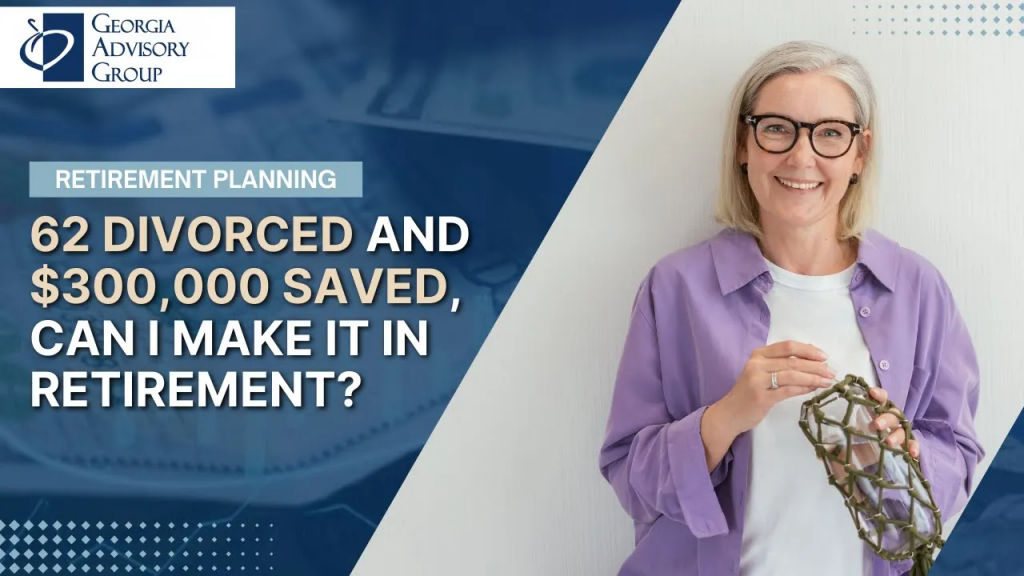
Retirement Planning: How much money do I need for a successful retirement? It appears to be a logical question, but it is impossible to answer. It is similar to asking, “Did the chicken or the egg come first?” We need to know what our shortfall from expenses is compared to our income, not how much money we have.
What is Jade Lizard Hybrid? | How does it helps to survive today’s crazy market?
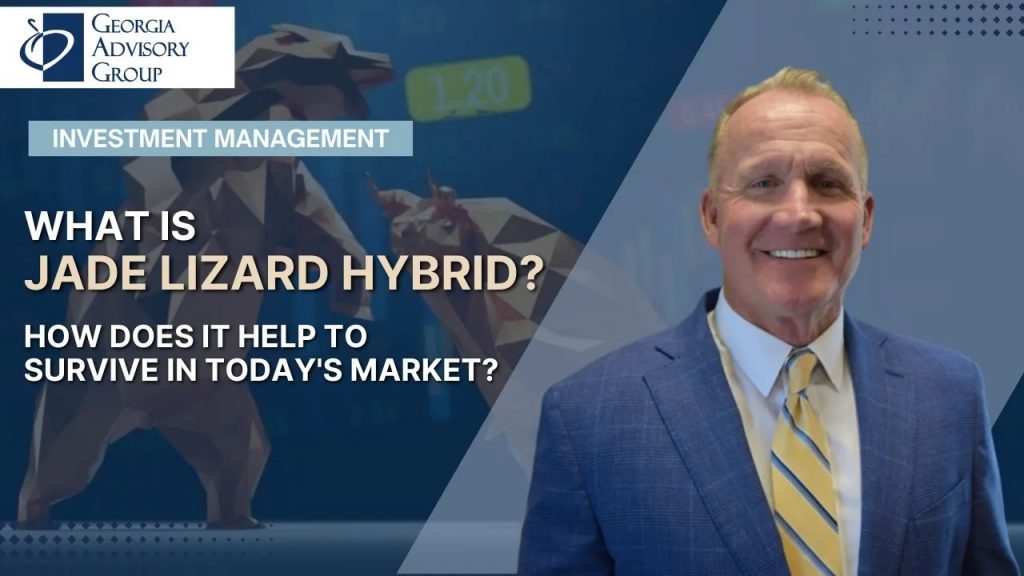
https://youtu.be/KuRoCcSapig How about a cool idea for today’s crazy market? As I’ve said many times before, giving you great ideas is what sets us apart, so if you’re patient and take some notes, I think you’ll like this one. It’s called a jade lizard hybrid, and that alone should keep you focused on staying with us for a little while. Hi, this is Dave Dooley from the Georgia Advisor Group here in Alpharetta, Georgia. With over 40 years in the financial markets and some of the brightest minds when it comes to taking advantage of solid strategies in today’s market, we try to provide timely financial tips to help our followers be more aware and knowledgeable in today’s complex and ever-changing economic times. For the year 2022, the Dow Jones is down around 21, the SP 500 is down 25%, and the NASDAQ is down over 33, and that’s just year-to-date, not their highs from late 2021. Those numbers are enough to force a lot of people to run and hide, but we continue to look for ways to not only survive but to thrive. Normally, our videos are more informative than strategic, but today we wanted to throw out a quick idea that might be relevant in today’s market. One can make a case for high inflation and high interest rates continuing to put pressure on the markets; one can also make a case for certain profitable companies that have had a decent drop and are ready to go up soon; and finally, one can make a case for a little sideways action for the foreseeable future, at least until the interest rate and inflation situation starts to improve. Determine how many shares you would like to potentially own; it should be at least 200 shares. Now, our first transaction is to purchase 100 shares, and the current price of Apple is 139 dollars, so we invest 13,900 dollars. Our next trade is to sell one June 2023 150 call option for twelve dollars per share, giving you a total of twelve hundred dollars to keep this trade, which means you’re agreeing to sell your hundred shares for 150 dollars per share if it rises to 150 or higher.The final trade is to sell one June 2023 130 put option for ten dollars per share, which generates another thousand dollars for you to keep this trade, which means you’re agreeing to buy a hundred more shares for 130 dollars per share if it falls to 130 or lower.Now what does all this really mean? It means that by selling the options, you earn a total of $22,100. This is 15.8 percent of the value of the stock. If the stock rises above 150 by next June and you are forced to sell it for 150, you add 11 cents per share, or a thousand more profits, to your 2200 or 3300 and a 23 percent total return. This is your best and maximum profit, no matter how high Apple should rise in the future, but that return is yours with a minimum amount of movement. This is a very good return in approximately eight months with not much movement required. Now what is our risk? We said at the beginning that we wouldn’t mind owning 200 shares, and so far we’ve only bought 100. If the stock drops below 130, we will have to buy another 100 at 130. Even if it falls below that, how does that affect selling the options up front? We received 2200 that is ours to keep. If we were required to buy a hundred more shares at 130, we would be investing another thirteen thousand dollars or a total of twenty-six thousand nine hundred for the 200 shares that we have now bought as we should receive 2200, reducing our total expenditure to 24450 or a cost basis or break-even price of 123.25, which is 16.75 below today’s market price. We would not have losses unless it dropped below 123.25, so our potential outcomes are under 130. Our breakeven point is 123.25 between 140 and 150. Our gain is 15.8 percent and above 150. Hour return is around 23%, not bad for 8 months, so a great idea with companies that are fundamentally strong with great management in place and most importantly, stay with a reasonable state and trade within a reasonable range now, don’t get frustrated as you stop this video or as you look at it because you can stop it and start it and go back and review what I’ve just talked about as always, I’m going to tell you to use experts in these areas. Most firms don’t have the time or resources to provide this type of service, but with a boutique firm like ours, this is what actively matters and what the counts look like now. I hope this gets you thinking a little bit, and if you think our content is good, I want you to click subscribe below, click on the “show more” button also, and that way you’ll be able to visit us at our website, take a look around, and be able to fill out the information there to join our newsletter until next time.
What is the Best Time to Invest in Today’s Market?
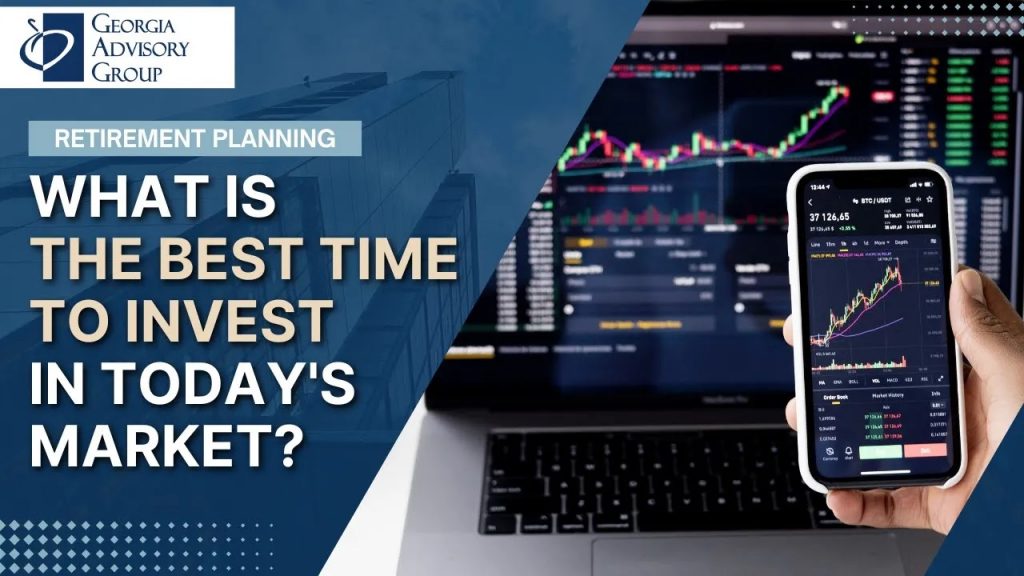
https://youtu.be/sA6d3KYt_8k Investment Management: What is the Best Time to Invest in Today’s Market? | Georgia Advisory Group There’s no better time to Invest than Today, I’ve never seen anything like it in 40 years in the financial industry so much negativity and I believe it has to do with the political climate we’re in today and it’s feeding into our personal lives. Hello, Dave Duley here with Georgia Advisory Group, with another video to set you straight on great advice to keep you focused on the road ahead watch this video all the way to its conclusion and see if you agree with me, then comment below on your feelings on what you believe the future holds. Countless psychological Studies have shown if you take 10 average people and stick them in a room from all different backgrounds for a period of one hour and plant one person whose entire outlook on life is negative and a second person who is positive about every subject discussed that nine out of the ten will come out of that room with a negative outlook. Now, the human brain’s natural tendency is to give weight to negative experiences versus interactions that are positive negative imagery or experiences cause stronger stimuli in the human brain that’s why we call it being in a funk, and then it impacts the entire body not only physically but emotionally it just feeds on itself, it’s human nature. Look, I’m so glad these midterm elections are almost over. When you get home and turn on the TV you want to just scream at all the negative news from political ads to negative news on the financial markets, we’ve got High Inflation, Interest Rates on the rise, Companies Missing Revenue estimates, Housing Prices Falling, Conflicts across the Globe, and oh Lord my portfolio was down. Pessimism is everywhere, but now let’s look at reality. It took our country only 150 years before we saw electricity reach almost every home along with running water and sewer capabilities. Think about it from a financial Viewpoint. In 1990 just 30 years ago the Dow Jones sat at 2700, and today it’s over 32 000. The NASDAQ sat at 400 in 1990 and today is over ten thousand. We have seen exponential growth in the last 30 years than in all the last thousand years. Since 1990, what have we gone through? Yes, we got work to do by reducing deficits Opening our energy resources and getting rid of more regulations, and letting capitalism do its thing. And that goes for both political parties. But here’s what’s awesome, as we say in the South, we always get it done. In the next 10 years, the Innovations are coming are mind-blowing from technical to medical, and innovations that are still on the drawing board today. The creativity of the American entrepreneur is second to none. None of the companies that today are on the top 10 list I mentioned earlier of public trading companies was even on that list 30 years ago. Not a single one. So I’m beyond excited to see what lies ahead over the next 10 years. Much less over the next 30 Years. So, focus on family and friends, and let’s thank God we live where we do and have today one of the best opportunities ever afforded each of us during this period in History. Listen, click on the show more below this video and visit our website there you’re going to find great information from how to create income to wealth building to why we are different than most other Financial firms then fill out our newsletter information and get on the list if you like our content click subscribe and you’ll get notified every time we post new content till next time.
Woke in the Financial Industry
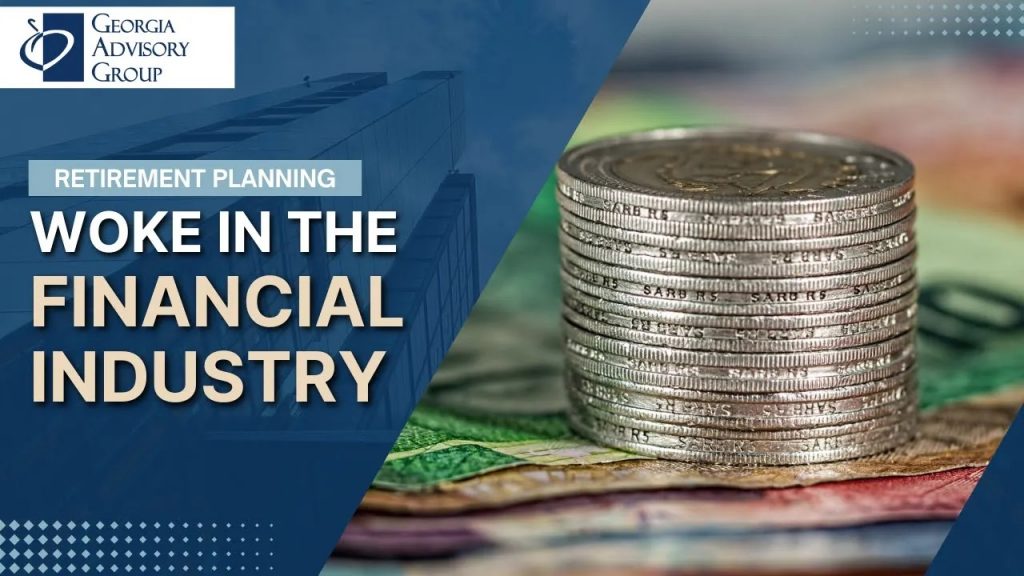
https://youtu.be/hKNs1Ddec-8 “Woke” in the Financial Industry. Look, let’s get real as they say in this “woke” environment, it seems that we continue to redefine the meaning of words where evil is good and good is evil. This is now taking place in the Financial Markets, where we see words like the judiciary, asset allocation, institutional investing, and diversification take on all new definitions or are given more emphasis than they had just 10 to 15 years ago. Hello, my name is Dave Duley, a 40-year veteran of the financial markets and Lead Advisor for Georgia Advisory Group, in Alpharetta, GA. We hear these phrases like “Do business with me,” and “I’m a fiduciary,” we see them in commercials, and we push them as if they’re some new concept or somehow, in the 21st century, have taken on some added value or weighted meaning. Since the 16th century, that word has meant the same today as it did 500 years ago. holding something in trust or entrusted confidence and pledging to act in the beneficiary’s best interests, yet we use it as a selling point to say, “Hey, I passed an exam, which means I can be trusted more than someone else who is not.” It’s nonsense, Total nonsense !! We have certified fiduciaries today. Judiciary advisors register fiduciaries, and it goes on and on. Am I to believe that an insurance guy or girl or a real estate agent is assumed to be crooked because they choose to be paid in commission instead of a fee? Does it matter if the agent or advisor is paid a commission or fee if it’s in the best interest of the client? This goes to redefine the meaning of the word “look.” It means what it means to put your client first and act accordingly. Let me give you an example: if you bring in $100,000 this year and he charges a fee of, say, 1.5% annually, and your account gains 10% over the course of a year, you now have a $110,000 and your fee at 1.5% to your advisor is $1750, which seems fair right? But wait, the advisor made you $10,000; remember, you brought in $100,000 and you paid $1,750 of the $10,000 or 17.5% of your gains to them; does that 17% seem fair on your gains? What about the insurance representative that invested $100,000 in an annuity and was paid 5% commission? Is he or she not acting as a judge and charging you a third of what the fee-based advisor charges? The best interest is the best interest as long as it is disclosed before the transaction and understood by the client as being in their best interest based on the prevailing need of the client. Both are sound actions. I’m using examples to demonstrate my point that we shouldn’t push one or the other for the purpose of selling a service or demeaning the other. If the representative’s goal is simply to collect assets and get more money under management in order to charge a fee, that’s wrong. On the other hand, if someone is selling a product regardless of how it benefits you in order to earn a commission, that’s also wrong. Nosey, you’re still in the market as a whole. Diversified meant holding money in the stock market, CDs, real estate, commodities, and a side business years ago; today it means holding a lot of different investments all tied to market risk versus completely different areas all together outside the market. Sound financial planning takes a team of experts in one location to walk you through your choices and options based on your specific family makeup. Your job is to ask the right questions, and that’s what we want to do: provide you with the questions to ask. Dealing with a local firm has a lot of advantages over dealing with a national firm because sitting face-to-face with someone who knows your exact situation and the changes that will take place over the next few years makes a difference. Everyone you deal with in life should be a few this year to you and your family looking out for your best interests always now listen, I hope this video gave you some food for thought and helped you make better decisions when deciding what advisor to surround yourself with, click on the Subscribe button below. It won’t bite you, it just notifies you the next time I post graded information.
Annuities: Do Zero-Risk Investments Exist?
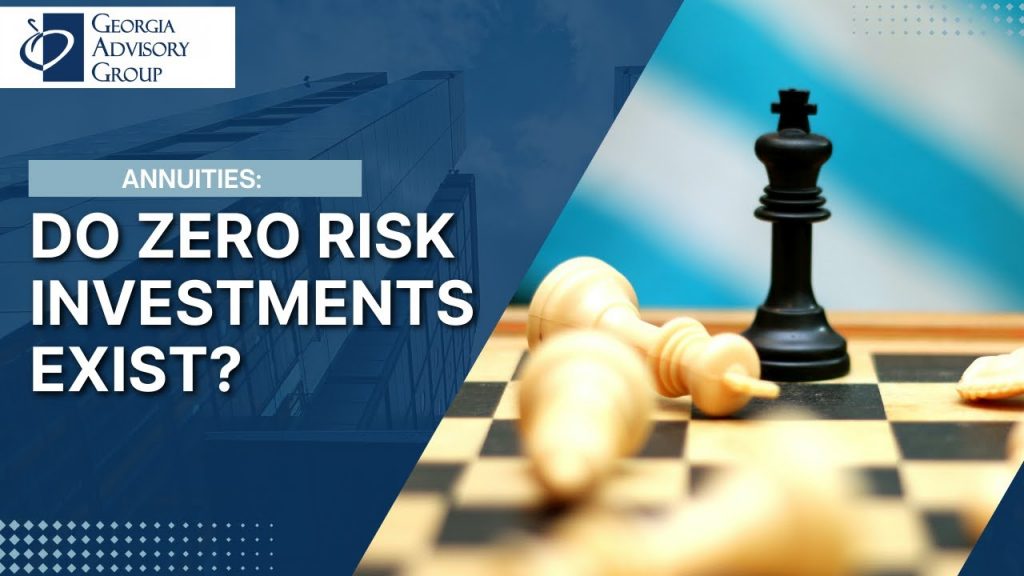
https://youtu.be/U10UEcvIGF4 Do “zero-risk” investments exist?With the equity markets in turmoil, where can I hide and focus solely on fixed returns, and what money is best placed in those types of investments? Hello again! I’m Dave Duley with Georgia Advisor Group, a full-service wealth planning firm located in Alpharetta, Georgia. Do us a favor. If you enjoy these videos, click “subscribe” and ring the bell below. This lets us know we’re providing valuable information to you, so let’s dive right in. Because of the severe market volatility, we continue to get calls and questions related to protecting the downside risk while participating in the markets. One question is: what alternatives are out there? What guardrails can I put in place today? I’m going to focus on equity-indexed annuities because that’s the question that we receive on a regular basis. Equity-indexed annuities are set-rate fixed annuities where the rate of interest that you earn is linked to the returns on a specific market index that you choose. This is typically said annually by the insurance company issuing and guaranteeing the contract. In 2007, Federal Reserve Chairman Ben Bernanke disclosed that his largest financial assets were in annuities, while the benefit of lifetime income remains a significant benefit of annuities. They have evolved dramatically in recent years to meet increasingly complex needs of investors preparing for retirement, though at the time, from 2007 through 2009, we were heading into one of the most tumultuous markets in U.S. history, and all the banking leaders in the FED were trying to assure the average investor not to panic and stay the course in the markets. We discovered that the FED’s chairman had the majority of his personal assets in securities that protected market losses, and once his blind trust was revealed, I found that pretty interesting. Limra, a research consulting firm and non-profit trade association, reported that in the second quarter of 2022, over 77 billion dollars were poured into annuities, setting a new record not seen since 2008. This is the largest number ever recorded from limber since 1995, when they began to track annuities. The majority of those dollars are put into what are called “indexed annuities” or “equity indexed annuities.” With the continued conditions of the markets today, they are projecting that the record will be broken once again in the third quarter of 2022. and you’re going to see those numbers relatively soon. So why is this taking place? First and foremost is the protection of your principal. Most annuities do not protect against any loss to your principal. This brings a lot of comfort to many investors; they call it the “Sleep Factor.” Second, in the indexed annuities, you can still participate in market gains with certain limitations. Let me make that crystal clear. And at some point in the future, you will begin to draw a lifetime income for not only you but your spouse. These vehicles are suited for all investors, and should they be part of everybody’s asset allocation? The answer is no. There are many moving parts, from caps to margins to spreads to participation rates, and of course surrender fees are at the top of that list. But if you’re looking for market returns tied to overall market indexes with protection of the principal, then you may be headed in the right direction or at least beginning to ask the right questions. What is best suited for you? In 1995, Keyport Life introduced the first index annuity. It had a 100% participation rate in the market returns and a 150 basis point spread. What that meant for you was that if the SP index, for example, increased by 20% and you had $100,000 invested, you would receive that year a fee of less than 1% or $8,200. If the SP fell by 20%, you would not lose a penny and your account value would still be $100,000. If the index fell by 20% in year two, after you received the $8,200, your account value would be $100,000. The answer is Yes, because they had a 10-year surrender period. If you needed to access your money above the 10 free withdrawals per year, you could be penalised significantly. For example, if your balancing year three was 130,000 and you needed more than the 13 thousand for emergencies, it could cost you a lot to access those additional funds. Another caveat is the fact that these were commissionable products like life insurance or b-share mutual funds, and because of that, many people were sold these products not because they were in the best interest of the client, but rather to profit the seller. Over the years, the SEC along with the state insurance departments have cracked down and set rigid guidelines for disclosure to clients so they can make informed decisions before purchasing. In addition, the insurance carriers have made it possible for registered fiduciaries to receive fee-only payouts instead of commissions where their interests line up with the clients by focusing on growing the assets and not just selling a product to line their own pocket. I can attest that, having been licenced for over 39 years in this field and serving on the Advisory Board for one of the largest privately held insurance carriers in the United States, we spent countless hours not only designing these products for the best interests of clients, but also ensuring that they were sold properly and ethically from a disclosure standpoint. Greater detail I’ve always been an advocate for using IRA money to fund these types of products. Why several reasons: an IRA or tax benefits The deferred account is a long-term vehicle, meaning I won’t touch it until at least 59 and a half at the earliest, and then I will only make yearly withdrawals, so surrender fees have no impact. How long will I have an IRA or a 401k? You’ll have it for the rest of your life or until you deplete the amount, but
Proactively Patient In Today’s Market

https://youtu.be/FCJS15TgTMI Proactively Patient in Today’s MarketsIt seems every day we continue to see negative news in the markets, and the knee-jerk reaction is to do something, anything. Let me take a few short minutes to tell you some easy things to consider when we’re in for a bumpy ride ahead. Hello again, Dave Duley is here with Georgia Advisor Group, a 40-year fiduciary firm here in Alpharetta, GA. I coached football for over 26 years as an advisor, and now I stress to the players to be patient as the game unfolds. We often get anxious and panicked when things aren’t going our way, and we want to either go deep into the playbook and try some crazy things, or we want to figure when we can just stay the course and things will work out. Now many times we have to call a time out. We have to reevaluate and set some new action items. Now patience doesn’t mean we do nothing or stick our head in the sand. I hear a lot today that many people are just saying, “I don’t even want to look at my accounts today.” This is absolutely the wrong approach to take. Being proactively patient means now is the time to reevaluate my positions. Six months ago, we moved our clients’ portfolios to a 50 to 60 percent cash position, the first time in 40 years, knowing that with 20 percent inflation, that’s not where we ultimately wanted to be, but we called the time out. Second, we wanted to be able to take advantage of lower prices in the future; we’re not going to try to guess bottoms, but we’re going to make a plan to cover resources available to buy great companies at lower prices that we believe have been beaten up to the extreme. We’ve always taken the stance to protect our portfolios with options trading, which means we’d place put options below our purchase price to protect them from fast-moving equity markets. market swings and locking in gains as the markets moved up, but because the markets had moved to a snail’s pace and a downward trend since last November, the cost to do that became prohibitive, so we moved to a partial cast position in our portfolios where we could close positions considering the best tax advantages and then we would have dry powder cash to purchase great companies at a discount in the future. It’s no different with repositioning. The steps you can take today are to see where you can take some long-term gains from positions that you don’t believe will bounce back as quickly as some others. When I see a company that has all the fundamentals in place, tonnes of cash on hand, great margins, Companies that have great management in place but have been beaten down because they are so widely held these are the companies I want to own and be in for the long haul well into the future now do I want to buy them today maybe not but I may want to set up a plan to buy some shares each month over the next six months as the market continues to drop I want a dollar cost averaging in while the market is falling I’ve got homeowners insurance, right? I’ve got life insurance. Why in the world would I not have protection on my portfolio? So protective patience means slowing down, reevaluating, and putting together a new plan. All that said, you need to ask your advisor what steps they’re currently taking and what the new plan is. If this continues over the next two years and you don’t get specific answers, then you need to run. Don’t bury your head or get anxious, but I can assure you that one of the things that hope is not a plan is I’d love to hear from you, and so would our viewers, so comment below and let us know what action you’re currently taking, but click subscribe below and ring the bell this way I can continue to keep you informed on great ideas to manage through this mess if you need a reevaluation or just a set of fresh eyes on your portfolio, go to our website where there’s great content, fill out the form, and we’ll help you get you on the road ahead until next time
Annuities: Do Zero Risk Investments Exist? – Georgia Advisory Group

Estate Planning for Retirement: Prioritize Your Needs | Important Points for Estate Planning
The typical first meeting with an advisor usually begins with how many accounts do you have? and the value of those accounts, or what is your current income and expenses?
3 Easy Steps For A Successful Retirement – Georgia Advisory Group

https://youtu.be/i_0L4P9njNk We talked last time about how timing is everything when it comes to retirement and how to ensure your success over the long haul. Did you know that 10,000 people in North America will retire today while you’re watching this video, and 10,000 people every single day for the next 10 to 15 years? That’s a tsunami, and if you’re one of them, I hope you don’t get Beats before you even get a job. Hello, my name is Dave Dooley, a 40-year veteran of financial markets who works with thousands of pre-retirees at a fiduciary firm in the local North Atlanta area. If you stay tuned here for a few minutes, I’m going to give you sound advice on taking three critical steps to set the stage for success before or in retirement. These are mistakes we see every day, and the great news is there are simple fixes. So let’s dive right in and get started with number one, get things consolidated and get your house in order. Get your finances in order. Get your finances in order. It sounds easy, but it drives me nuts to see how lazy people are not getting the first step done, having three IRAs. Money market accounts, savings CDs, checking accounts, brokerage accounts, and life insurance policies are all examples of financial instruments. It’s just too much. For one thing, you’re trying to keep things simple in retirement and easy to understand if your spouse or children need to take over in the future. If you can’t explain what you have and where it’s all located in less than three minutes, you’re already off to a bad start. Secondarily, by not consolidating the amount of overlap between accounts and trying to maximize returns, it is almost impossible to track effectively if things are scattered all over the place. When people say to me, “Dave, my account’s up today or it’s down,” the question is, “Why is it up or why is it there? What caused it to increase or decrease? What positions moved where?” If I’ve got six different accounts, it’s too difficult to decipher, and last on consolidation is making sure a counselor is named properly with correct beneficiary information, which maximizes tax advantages and sets the stage for a smooth transition in the future. The second crucial step is: who do I use as my advisory team? Who’s going to be my third eye? Proverbs tells us that where there are many counselors, there is much wisdom, and if you don’t trust the Bible, Vanguard has done a study that shows repeatedly that most people who use professional advisors outperform the do-it-yourselfers by over 75 percent. Now that’s a big number. Use a firm that you can drop by the sea regularly or that you can zoom in regularly as life changes occur, and believe me, things will change even in retirement. The average person today in the US is retired at age 66, whereas that number was 62 not long ago, and spending over 25 years in retirement. That’s a long time, and it’s increasing because we’re not planning. Use a firm that has all the experts in one location. money managers Insurance experts legal advice tax accountants, this is huge. There are questions we get every day, and it takes a team to effectively answer them. When should I start my social security income? When do I pull the trigger on my IRA? Which account do I draw down first and how do I reallocate my investments to protect my principal from market losses? What Medicare coverage do I need? Should I self-insure for nursing home or home care coverage? And the list goes on. It’s exhaustive, and it requires several experts in different fields to review it and make sure we get off to a good start. If your firm doesn’t have experts in each of these areas, run. If they’re just handling your portfolio investments and nothing else, it’s time to make a change. Set a date and a time now. Write out your questions. Make a plan now. That sounds easy enough, I know, but listen to me carefully. I don’t care if you’re 30 or 75; these first two steps will set the stage for SAS, but if you ever get started, you’re already way behind. Tell yourself today, “I’m getting this done; I’m making a plan today.” Here’s what I would say to you: Let us help you. Below you’ll see the “show more” button, and there you’ll find our website. You can Fill out the information and we will send you a free data kit. It helps you get the ball rolling and is organized to even ask the right questions. Better yet, you can pick up the phone. Call us, and one or more of our advisors will walk you through the questions you should be asking yourself. I hope this video was helpful to you. Click on the Subscribe button below or ring the bell if you want to continue to be notified when great content is posted. See you next time.
